
In order to better understand how your intimate lubricant works on your body, we have broken down some basic scientific concepts and terms. Since they are applicable to lubricants, this information can help you make the right choice of intimate lubricant for yourself and your partner.
Osmolality is a measure of dissolved particles per unit of water in a solution or serum (sometimes called concentration). The osmolality of a lubricant is important because the epithelial layer of the skin or the body's natural mucus is constantly trying to maintain homeostasis or osmotic balance.
· Water freely moves back and forth across cell membranes in response to the osmotic pressure exerted by the extracellular fluid molecules (lubricant) on the intracellular fluid of the cell;
· Osmolality is measured in milliosmoles per kilogram of solvent, denoted as mOsm / kg;
· If the lubricant has a higher osmolality than body cells, it is called hyperosmotic, causing the body cells to expel water in an attempt to dilute the lubricant, sometimes leading to cell death by dehydration. Lubricants containing glycerin and propylene glycol have high osmolality, so they are hyperosmotic;
· Hyperosmotic intimate lubricants can irritate the skin and cause the epithelial layer to slough off, dehydrating the mucus and leaving the mucous membrane more susceptible to bacterial infections and STIs;
· If the lubricant has a lower osmolality than body cells, it is called hypoosmotic and causes the body cells to absorb water from the lubricant. This is what happens with lotions on the skin covering most of the body;
· The ideal lubricant would be isotonic, meaning it would have the same osmotic pressure, or its cells would have the same hydration levels as body cells;
· Isotonic lubricant for most of the body's secretions would have an osmolality of approximately 285-295 mOsm / kg.
Average osmolality:
· Tap water ~ 3 mOsm / kg.
· Vaginal mucus ~ 260-290 mOsm / kg.
· Water-based lubricant ~ 269 mOsm / kg.
Endocrine disruptors are chemicals that affect the natural function and balance of the endocrine system.
· The endocrine system consists of glands, hormones, and hormone receptors that regulate many vital functions of the body.
Xenoestrogens are chemicals that mimic estrogen, and the side effects caused by xenoestrogens are called estrogenic effects.
· Estrogenic effects can include sexual development issues, such as feminization of male bodies or masculinizing effects on female bodies, as well as changes in gene expression.
· Parabens are considered xenoestrogens and have weak estrogenic effects.
pH is a measure of the alkalinity or acidity of a liquid on a scale from 0-14, where 0 is the most acidic and 14 is the most alkaline.
· Healthy organs naturally regulate pH with a specific balance of yeast, fungi, and bacteria in combination with the body's secretions.
· pH can become unbalanced when a foreign substance (such as a lubricant) disrupts the level of bacteria or fungi.
· An imbalance in vaginal pH can lead to bacterial vaginosis and yeast infections or serve as a warning sign or symptom of a more serious condition.
· Vaginal and cervical pH levels naturally fluctuate with the menstrual cycle and depend on estrogen levels, playing an important role in fertility and conception.
Average pH levels:
· Vaginal pH - 3.8-4.6
· During pregnancy: 4.0-4.5
· Postmenopausal: 4.5-7.5
· Semen: 7.1-8.0
· Rectal fluid: 7.0-8.0
· Urine: 4.6-8.0
· Water-based lubricant: 4.3
Humectants are substances added to lubricants to retain moisture and slow down the evaporation of water.
· They sometimes affect the consistency of the lubricant and can increase viscosity.
· Common humectants in intimate lubricants include propylene glycol, glycerin, urea, or lactic acid.
· Natural/organic humectant alternatives include honey, shea butter, coconut oil, jojoba oil, aloe vera, guar gum.
Surfactants are chemical compounds that reduce the surface tension of liquids.
· They are used to prevent the components of the lubricant from separating or evaporating.
Petrochemicals are chemical substances derived from oil or raw petroleum.
· Many intimate lubricants contain petrochemical products such as propylene glycol (propandiol), benzene, benzoic acid, and some surfactants.
· These substances are often indicators of hyperosmotic lubricants that may dehydrate mucus and cause skin irritation, making the mucous membrane more vulnerable to various infections.
Microbicides are substances added to lubricants as preservatives or spermicides that kill or reduce the infectivity of viruses or bacteria.
· Common microbicides in intimate lubricants include nonoxynol, carrageenan, cellulose sulfate, chlorhexidine gluconate, and sodium dodecyl sulfate.
· Some alcohols, surfactants, phenols, and acids can also act as microbicides in lubricants.
· They can cause skin irritation and the death of epithelial cells.
· Regular use of some microbicides that kill lactobacilli may lead to bacterial vaginosis or yeast infections and make the mucous membrane more vulnerable to infections.
References:
1) Thomas, Pat. "On the Mark: KY Jelly". The Ecologist. 24-2. http://www.theecologist.com.
2) Bakshi, Rahul P., et al. "Hyperosmolar Sexual Lubricant Causes Epithelial Damage in the Distal Gut: Potential Implications for HIV Transmission". Journal of Infectious Diseases. 195 (2007): 703-710.Web.
3) Abusuwaa, Raed, Deborah J. Anderson, Richard A. Cone, Timothy Hoen, Thomas R. Moench, XiXi Wong. "Vaginal Microbicides: Detective Toxicity in vivo that Paradoxically Increases Pathogen Transmission". BMC Infectious Diseases. 6 (2006): 90. Web.
4) Ayudhya, Kunjara Na, et al., "Wetter BetteR? Assessing Over-the-Counter Personal Lubricants for Safety and HIV-1 Combat". PLOS ONE. 7 (2012): 1-14. Web.
5) Adriaens, Els, et al., "The Potential for Mucosal Irritation of Personal Lubricants Is Related to the Osmolality of the Product, as Determined by Mucosal Tissue Analysis", Sexually Transmitted Diseases 35 (2008): 512-516. Web.
6) Moench, Thomas R., et al. "Microbicide Fillers Can Significantly Increase Susceptibility to Genital Herpes Transmission in Mice". BMC Infectious Diseases 10.1 (2010): 331.
7) Ambrosini A., T. Maggino, M. Milani, D. M. Paternoster, L. Tudor. "Effectiveness of Acidic Vaginal Gel on Vaginal pH Levels and Interleukin-6 in Low-Risk Pregnant Women: A Double-Blind Randomized Placebo-Controlled Study". Journal of Maternal-Fetal and Neonatal Medicine. 15 (2004): 198-201. Web.
8) Wolf, LK. "Studies Raise Questions about Personal Lubricant Safety". Chem Eng News 90.50 (2012): 46-47.
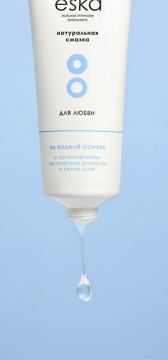 Eska - water-based lubricant, 75 ml
19,50 USD
Eska - water-based lubricant, 75 ml
19,50 USD
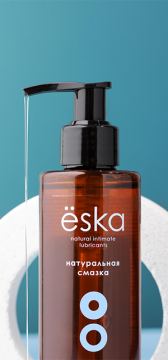 Eska - water-based lubricant, 200 ml
42,40 USD
Eska - water-based lubricant, 200 ml
42,40 USD
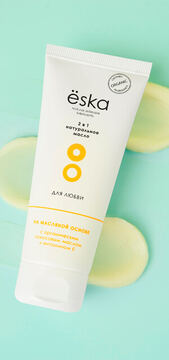 Eska - oil-based lubricant, 75 ml
23,10 USD
Eska - oil-based lubricant, 75 ml
23,10 USD
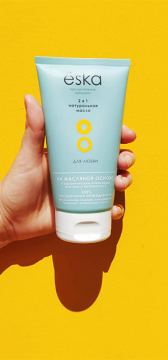 Popular
Eska - oil-based lubricant, 150 ml
38,90 USD
Popular
Eska - oil-based lubricant, 150 ml
38,90 USD
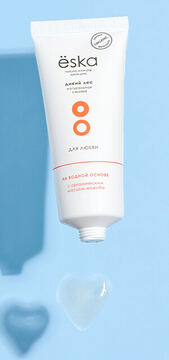 New
Eska - water-based lubricant Wild Forest, 75 ml
19,50 USD
New
Eska - water-based lubricant Wild Forest, 75 ml
19,50 USD
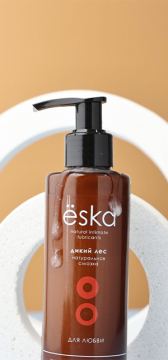 Eska - water-based lubricant Wild Forest, 200 ml
42,40 USD
Eska - water-based lubricant Wild Forest, 200 ml
42,40 USD
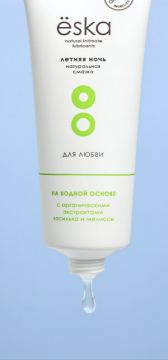 Eska - water-based lubricant Summer Night, 75 ml
19,50 USD
Eska - water-based lubricant Summer Night, 75 ml
19,50 USD
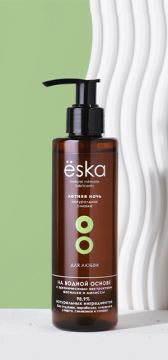 Eska - water-based lubricant Summer Night, 200 ml
42,40 USD
Eska - water-based lubricant Summer Night, 200 ml
42,40 USD
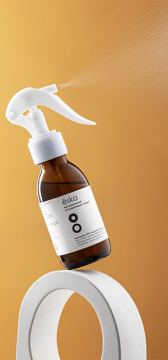 New
Eska - spray for cleaning and disinfecting sex toys
15,90 USD
New
Eska - spray for cleaning and disinfecting sex toys
15,90 USD